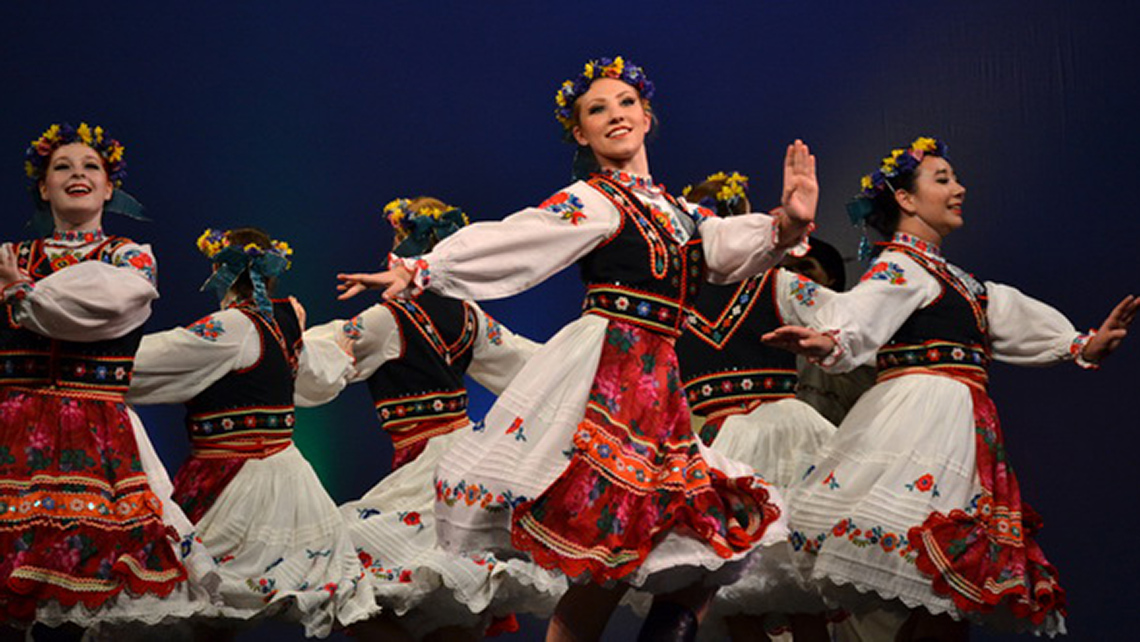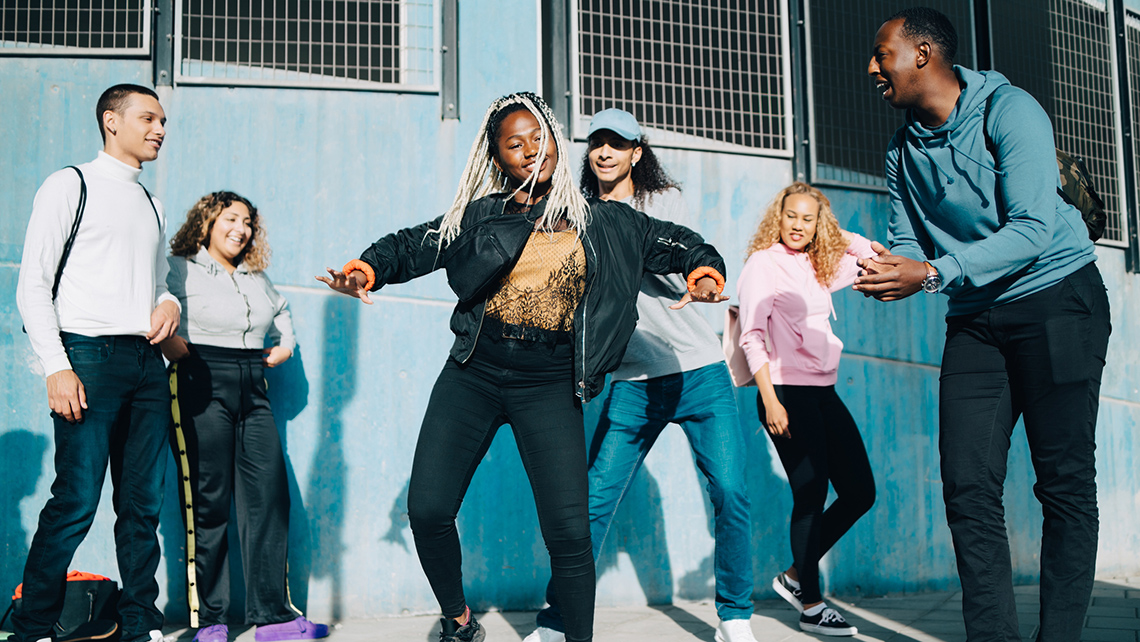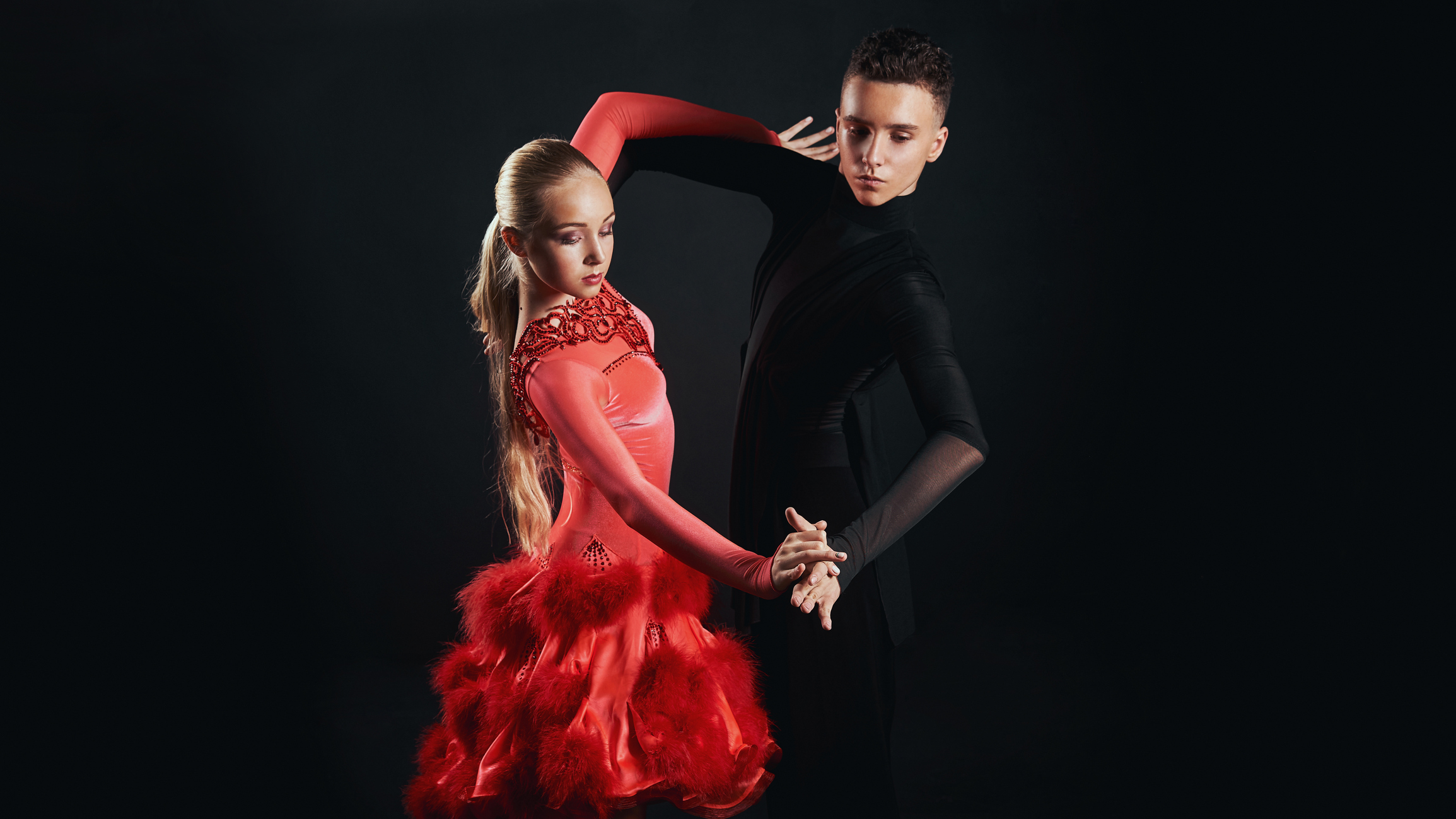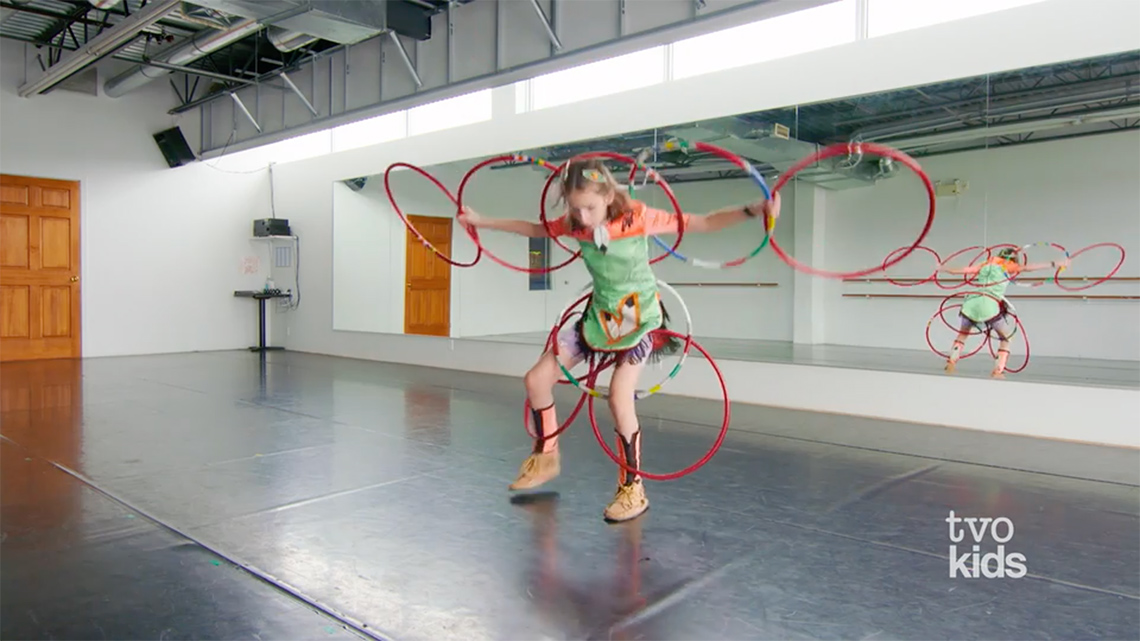Minds On
Today’s vocabulary

Press the following tabs to access today’s vocabulary.
Press the following tabs to access today’s vocabulary continued.
- air pathway
- ground pathways
Let’s get started!
Explore this episode of Raven’s Quest to learn more about Hoop dancing. Emily is from the Mohawk community of Kahnawà:ke, a First Nations community just outside of Montreal in Quebec.
Brainstorm
What do you notice?

After exploring the video, respond to the following questions:
- What do you notice about this dance?
- What do you wonder about this dance?
Record your ideas in a notebook or another method of your choice.
Action
Get ready, get set…
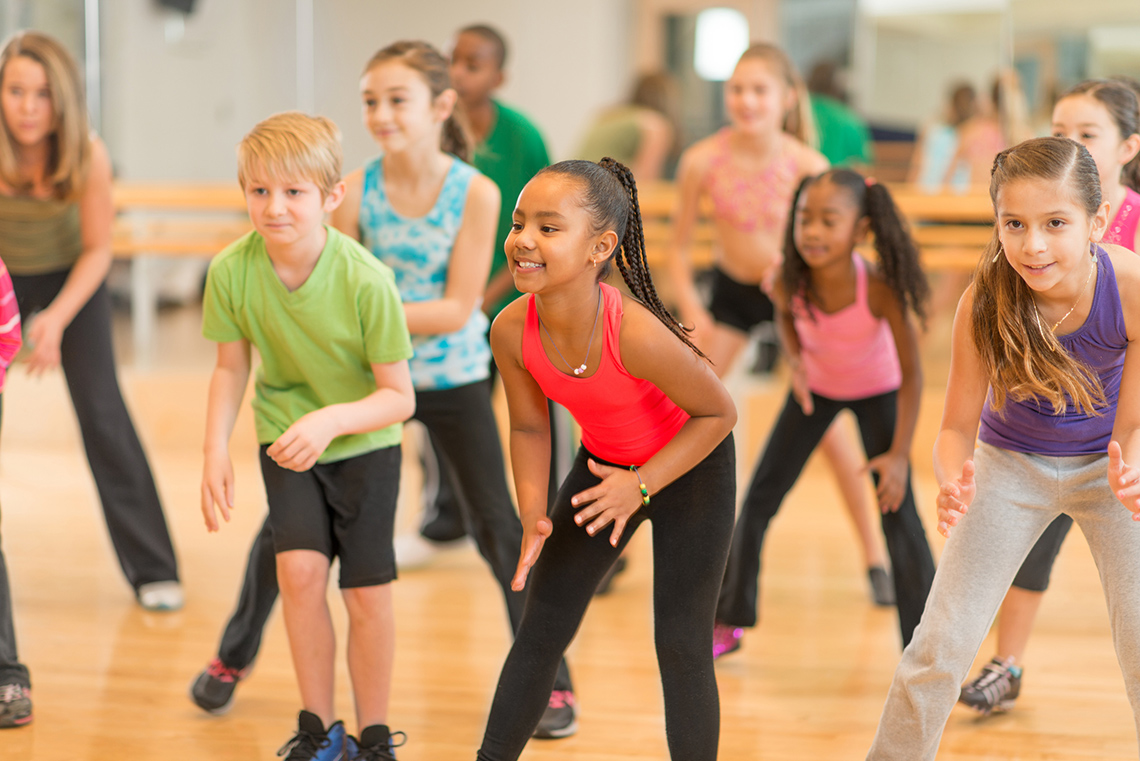
Dancing can be found all over our world!
There are many different styles and forms of dance.
Dances may have…
- traditional costumes or regalia
- special props
- cultural or traditional music
Dances may be danced by groups, partners, or solo. Also, dances may be performed for specific reasons, like celebrations.
Different communities around the world all have their own style or form of dance that is unique to them.
Check out the following images to explore different styles and forms of dance around the world.
After exploring the images, what props did you notice?
Press ‘Let’s Check!’ to access possible props.
Props are objects that can be used in a dance to enhance the performance, like chairs, hats, canes, and etc.
The props in the explored images are hoops and ribbons.
Props

Let’s explore the video from the Minds On section once again. Notice how Emily uses the hoops as props to enhance her dance.
Check out this episode of Raven’s Quest to learn more about Hoop dancing.
We can explore and learn more about First Nations Hoop dance and the props that are used by reflecting on the 5W's (who, what, where, when, and why) and H (how) questions.
Select the correct answer, then press ‘Check Answer’ to see how you did.
Pause and Reflect
Pause and reflect
Let’s reflect on the following questions about the First Nations Hoop dance:
- What parts of the body are being used with the hoops?
- What body actions are being used?
- What shapes are being created with the hoops?
- Are the movements locomotor, non-locomotor, or both?
Record your ideas in a notebook or another method of your choice.
Press ‘Hint’ to access a detail.
- Body actions are movements that are made with the body. For example, bending, bouncing, swaying, and kicking feet.
- Locomotor movements involve travelling from one place to another across a space (e.g., walking, galloping, rolling, etc.).
- Non-locomotor is non-travelling movement where the body stays in one place; also called axial movement (e.g., moving the arms and/or twisting the body while staying in one spot, rise and sink, shake, push and pull, swing and sway).
When you’re ready, press ‘Let’s Check!’ to access a sample response.
Emily uses her arms, hands, legs, feet, and back when dancing with the hoops. She uses body actions such as jumping, bending, bouncing, kicking feet, and arm movements. Emily creates shapes of nature, like the butterfly, flower, and eagle. She uses both locomotor and non-locomotor movements.

Did You Know?
Did you know?
Dance has deep meanings within Indigenous communities, and each dance carries specific teachings and histories with it.
The Hoop dance was historically a healing dance meant to help those who were sick in the community. The dancer tells a story of the never-ending circle of life with their movements.
Today, the dance is performed to celebrate and remind people of their teachings, and to inspire them to have pride in their identities. Each dancer has unique moves and regalia based on the nation and community they come from. In some families, hoop dancing is passed down from generation to generation.
Hoop dancing is a cultural dance and carries specific teachings. It is important to learn about and appreciate the dance, but not mimic or copy the dance on our own.
Go!
Chinese Ribbon dance

Chinese Ribbon dance – China
The Chinese Ribbon dance is another style of dance that uses props.
The Chinese Ribbon dance originates from China and began in ancient times. It is both a traditional and performance style of dance. This dance is performed at festivals and celebrations. The dancers use ribbons as props, and wave and swirl their ribbons as they dance. The ribbons create different designs and shapes as they move through the air.
Explore this video entitled “15 Flying Silk Ribbon Dance” to learn more about the Chinese Ribbon dance.
After exploring the video, respond to the following questions:
- Who is dancing?
- What props do the dancers use?
- Where and when does the dancing take place?
- Why do you think the ribbons are important to this dance?
- How are the dancers using their ribbons?
- What parts of the body are being used with the ribbons?
- What body actions are being used?
- What shapes are being created with the ribbons?
- Are the movements locomotor, non-locomotor, or both?
Complete the Chinese Ribbon Dance Activity in your notebook or using the following fillable and printable document. If you would like, you can use speech-to-text or audio recording tools to record your thoughts. Consider adding your work to your dance portfolio.
|
Questions |
Your responses |
|---|---|
|
Who is dancing? |
|
|
What props do the dancers use? |
|
|
Where and/or when does the dancing take place? |
|
|
Why do you think the ribbons are important to this dance? |
|
|
How do the dancers use their ribbons? |
|
|
What parts of the body are being used with the ribbons? |
|
|
What body actions are being used? |
|
|
What shapes are being created with the ribbons? |
|
|
Are the movements locomotor, non-locomotor or both? |
Press the ‘Activity’ button to access Chinese Ribbon Dance Activity.
When you’re ready, press ‘Let’s Check!’ to access sample responses.
| Questions | Your responses |
|---|---|
|
Who is dancing? |
There are six children dancing. |
|
What props do the dancers use? |
The props the dancers are using are ribbons. |
|
Where and/or when does the dancing take place? |
The dancing takes place on a stage at a performance. |
|
Why do you think the ribbons are important to this dance? |
The ribbons are important because they help to enhance the dance, by giving the movements a more flowing and impressive feeling. |
|
How do the dancers use their ribbons? What parts of the body are being used with the ribbons? What body actions are being used? What shapes are being created with the ribbons? Are the movements locomotor, non-locomotor or both? |
The dancers use their hands and arms to control the ribbons. Some of the actions include running, jumping, cartwheeling, arm circles, and arm waving. The ribbons created shapes such as big circles, and waves. There were both locomotor and non-locomotor movements in the dance. |
Consolidation
Dancing with props
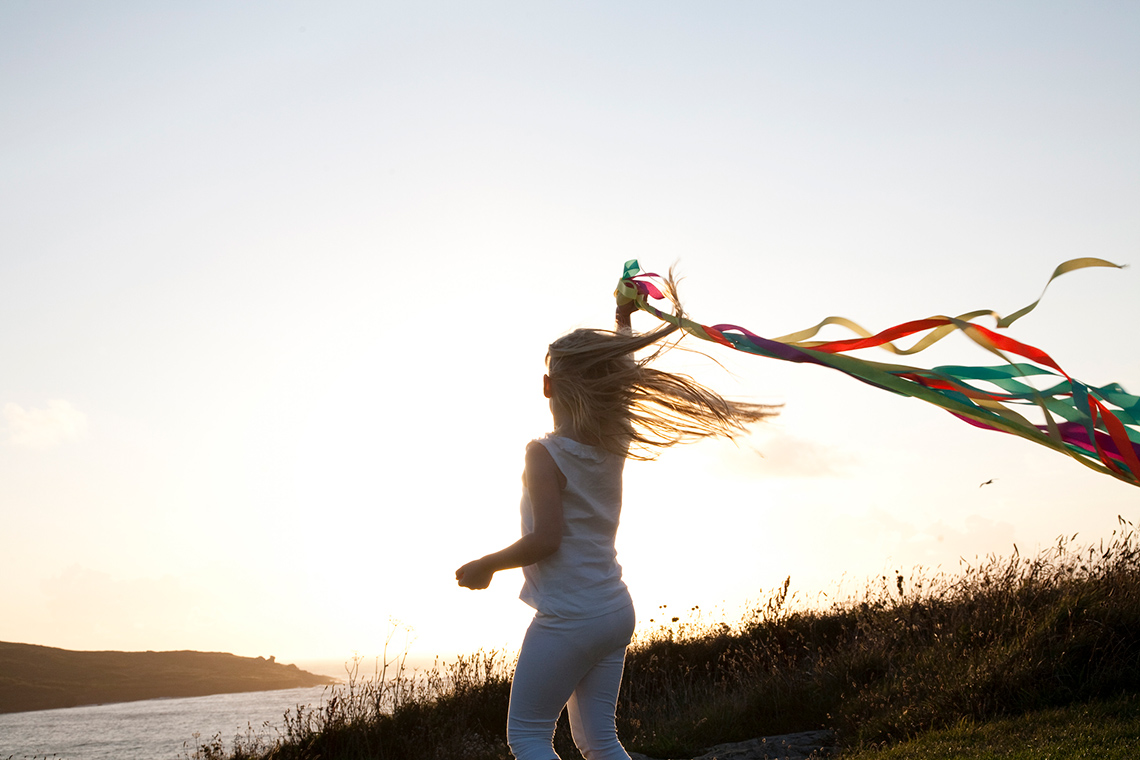
In this learning activity, we learned that communities all over the world dance. There are different styles and forms of dance that are unique to different countries and communities.
We also learned that props can be important tools to help enhance a dance, like hoops in a First Nations Hoop dance, and ribbons for a Chinese Ribbon dance.
Compare and contrast
Think about how the props used in the First Nations Hoop dance and the Chinese Ribbon dance are both similar and different.
Press ‘Let’s Check!’ to access a hint.
When describing the similarities and differences of the dances, think back to the 5W's and how questions.
- Who?
- What?
- Where?
- When?
- Why?
- How?
Complete the Compare and Contrast Activity in your notebook or using the following fillable and printable document. If you would like, you can use speech-to-text or audio recording tools to record your thoughts. Consider adding your work to your dance portfolio.
|
First Nations Hoop dance |
Similarities between dances |
Chinese Ribbon dance |
|---|---|---|
Press the ‘Activity’ button to access the Compare and Contrast Activity.
Consider adding this Compare and Contrast Activity to your portfolio.
Portfolio
Review your learning

Use pictures and/or words to respond to the following questions:
- Now that you have learned some of the history and significances of the Hoop dance and Ribbon dance, what could you teach others in your family or community about what you’ve learned?
- Why do you think it is important to learn about cultural dances from members of that culture or community? Consider adding your work to your dance portfolio.
Reflection
How do you feel about what you have learned in this activity? Which of the next four sentences best matches how you are feeling about your learning? Press the button that is beside this sentence.
I feel…
Now, record your ideas about your feelings using a voice recorder, speech-to-text, or writing tool.

